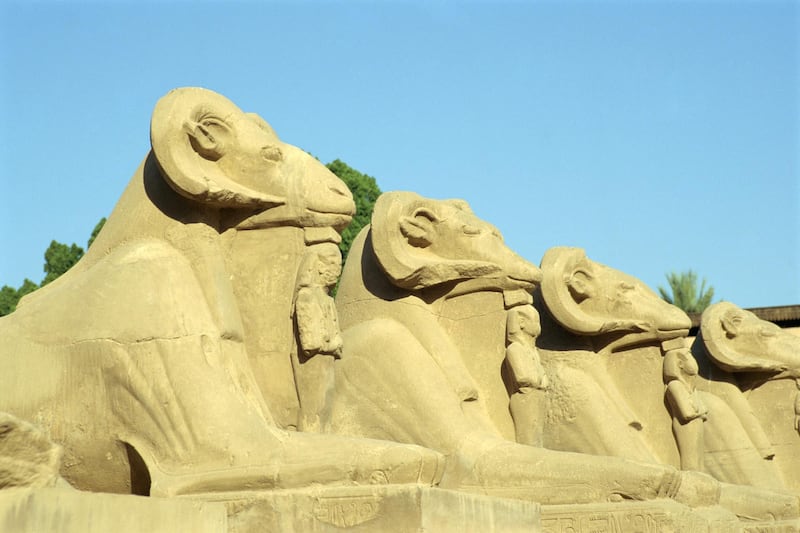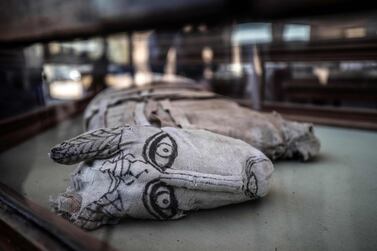For almost 3,000 years, dozens of sphinx-like statues with the body of a lion and the head of a ram have lived in the shadow of the majestic temple of Karnak in the ancient city of Luxor in southern Egypt.
Now four of the statues have been summoned to Cairo, Egypt’s modern-day capital 500 kilometres to the north, to be part of a renovation of Tahrir Square, birthplace of the 2011 uprising and home to both the famed Egyptian Museum and the Arab League headquarters.
To prepare them for the journey, a team of craftsmen is giving the limestone statues a makeover, ensuring that they are in tiptop shape when they arrive to take up residence in the city of some 20 million people. They are to be unveiled as part of the grand opening of the new-look square later this year.
But there are objections to the plan from both Unesco, the Paris-based UN agency in charge of world heritage, and Egyptians.
The chairwoman of Unesco's Arab Regional Centre for World Heritage, Sheikha Mai Bin Mohammed Al Khalifa of Bahrain, voiced the agency’s concerns in a letter to Egypt’s minister of antiquities and tourism.
“I am sure that you are aware that any changes at a site of that importance [the Karnak temple] must be preceded by consultations with Unesco,” she wrote.
“I propose conducting consultations and convening a meeting between your experts and ours to study this proposal and trying to find an alternative solution if necessary. We pledge to provide every technical support in this field.”
There has been no response to date from the minister, Khaled El Anany, or any indication that the plan might be suspended. Antiquity officials have pointed out that the statues do not come from the famous Kebash Avenue (Rams Avenue) that is currently under restoration. The path linking the Karnak and Luxor temples is lined on both sides by similar sculptures.
Mustafa Al-Sagheer, the antiquities chief for the Karnak temple, said the four statues were from a recently discovered cache that were apparently moved to their current location about 700-800 BC.
“The decisions to remove them was made after exhaustive studies by experts,” he said in a television interview last week. “All precautionary measures have been taken to preserve them.”
Mustafa Waziri, secretary general of Egypt’s Supreme Antiquities Council, said the transfer of the statues would be carried out amid tight security and that precautions would be taken to prevent vandalism once they are installed in Cairo.
He was alluding to the habit of some Egyptians to carve their names, images or football- or love-related phrases into historical objects on public display.
Many social network users, including some archaeologists, have raised fears that the deeply polluted Cairo air will damage the statues. They contend that, regardless of whether the statues were part of the Karnak temple or not, they should be left in their original habitat.
Emad Hussein, editor of Cairo’s independent Al Shorouk daily, said the government’s failure to announce details of the transfer in a timely fashion and its slow response to criticism fuelled the anger.
“Objectively, I cannot blame social media activists in regard to this story about the rams of Luxor,” he wrote on Sunday. “The reason for that is that they did not get a quick explanation from relevant authorities on what was really happening. Consequently, it was logical that many of them asked questions and reacted angrily, or even volunteered baseless opinions.”







